Protagonist and Posters
The Character - Why a chimpanzee/ape/monkey
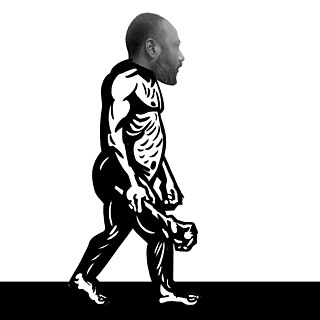
The character here is aimed at holding a mirror to the socially accepted idea of masculinity as a trait. Masculinity is not gender specific. It is a behavioural pattern that imbibes power play, exhibiting physical capacities, dominance and display of strength.
The ape depicted in the posters has no affinity towards or is neither a sarcastic take on any political or religious idealism. The ape here is a symbol of growth that the human race is undergoing whilst making its journey towards an inclusive, compassionate and balanced society – in turn becoming human beings in the true sense of the term.
Poster 1
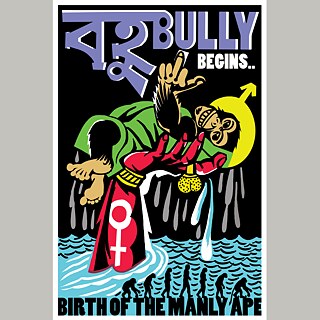
Poster 2
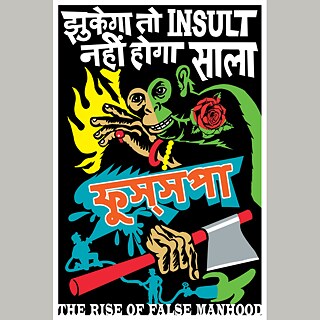
The poster counters the popular statement made by the protagonist of the film “mein jhukega nahi sala” (I will not bow down) with the statement “Jhukega to insult nahi hoga sala” (bowing down will not insult your existence)
Poster 3
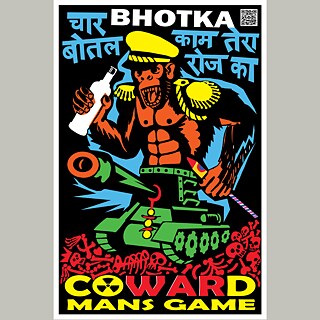
The poster refers to an act of violence as a practice where power overshadows humanity. It also draws reference to a popular song ”Char bottle vodka” by Honey Singh where the expression of manhood or power is displayed through a person’s capacity to intoxicate himself boundlessly.
Poster 4
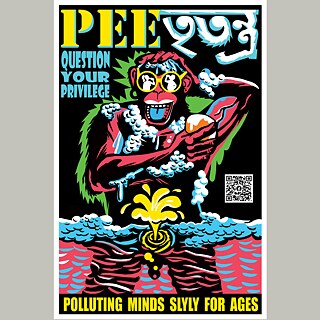
With reference to the act of open urination on streets as a common practice, the poster correlates the action to the animalistic act of territory marking. "Boys can 'GO' anywhere".
Is it simply the convenient posture that enables the man to dispose fluids at his will?
Are we, in this commonly found practice justifying the empowerment of man through a twisted and nonsensical behaviour?
The word PEEtritantra means Patriarchy in Bengali.
Poster 5
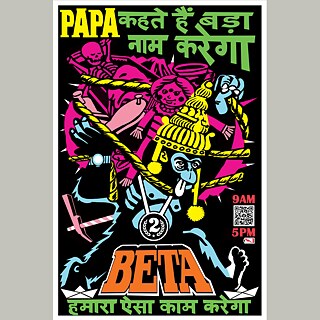
A Beta man is someone tending to assume a passive or a subservient role in social or professional situations.
Calm, patient, easy-going and often devoid of demands, the Beta male is next to the Alpha men on the hierarchy chart. Content with his possessions, the Beta is not ambitious. He executes responsibilities and submits to expectations that are set by the Alpha. The header in the poster says, ‘papa kahte hain bara naam karega’, which in English means ‘father says that I will be well-known’, is a take from a very popular Hindi film song. The Beta male is someone who is eager to meet the demand, conforming to the prevalent way of a male growing up. He follows the leader without questioning and bears the load of all the responsibilities that are levied on him. He never fails to deliver no matter how heavy the responsibilities are on him; he works till 9.00 am to 5.00 pm until his energy is finished.
Poster 6
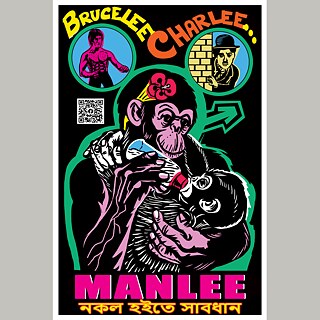
In this age of memes, word play and cultural icons act as an influential factor in our daily lives. This poster is created with two such icons who have influenced the mass with their superlative calibre to conquer inhibitions in different eras.
One of the characters included in this poster is Bruce Lee, a person who is considered a legend in the field of martial art, and who had shown the world to channelize energy designing a method of combat in a systematised way. He played a major role in popularising martial arts in the world which is a trend that still holds a prominent status.
The other character depicted in this poster is Charlie Chaplin, a brilliant actor who showed the world, the tactics to handle tragedies with his comical performance, which actually acted as a facade hiding the sorrows of a character.
Both of these well-known figures, in our culture, are remembered and are considered as ‘Brucelee’ the man who can fearlessly fight, and ‘Charlie’ the comedian which is a limited way to understand the personas. This restricted yet celebrated idea has encouraged other performers to create themselves as fake Brucelees and Charlies to earn a living entertaining people in various occasions.
The artist puns on the word ‘fake’ aiming to direct our attention towards other characteristics of a ‘Man’ which in the poster is written as ‘Man Lee’ rhyming with Bruce lee and Charlie. A ‘Man’ who is invested in childcare or domestic chores is a modern ‘Man’ who takes pride in being an evolved human being.
The poster gets a complete look with the text below in Bengali ‘nakal hoyite sabdhan’ which means ‘Beware of the Fake’ questioning some of the mistaken ideas about what masculinity means.